If you’re in love with Monstera deliciosa but don’t quite have the space for a houseplant that grows huge, may I suggest the ideal alternative? Monstera’s close cousin Rhaphidophora tetrasperma, usually referred to as mini Monstera despite not being the same species, may just be the plant for you.
Here’s everything you need to know about growing Rhaphidophora tetrasperma indoors!
| Common name(s) | Mini Monstera, dwarf Monstera, mini split-leaf, Monstera/Philodendron minima, Monstera/Philodendron ‘Ginny’ |
| Scientific name | Rhaphidophora tetrasperma |
| Family | Araceae |
| Height and spread | Up to 8 feet high and 2 feet wide indoors |
| Light | Bright indirect |
| Soil type | Aroid soil |
| Water | Keep lightly moist |
Disclosure: If you shop from my article or make a purchase through one of my links, I may receive commissions on some of the products I recommend.
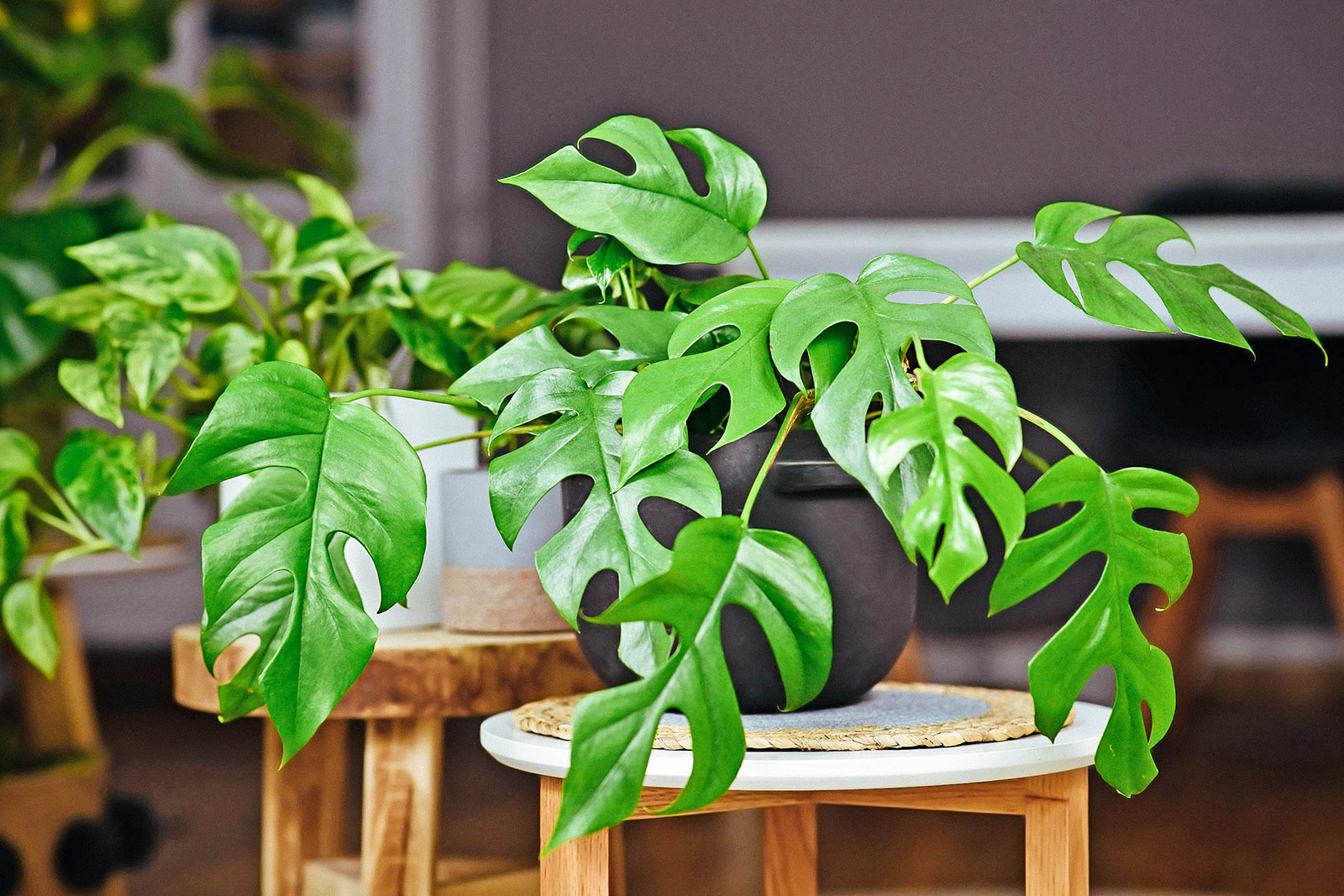
About Rhaphidophora tetrasperma
Natural habitat
Mini Monstera is naturally found in Southeast Asia, specifically peninsular Malaysia and southern Thailand (Boyce, 1999). Here, it occurs in (rain)forest habitats at relatively low altitudes and climbs taller plants in a vining manner.
Description
This species is an evergreen vining plant, one of those typical rainforest lianas (plants with long woody stems) that use trees as support to climb upwards and reach more light. (This climbing behavior is typical of other vining aroids like Syngonium podophyllum, Monstera deliciosa, and Monstera siltepecana.)
Except in very young specimens, the leaves are pinnate, meaning they have splits. Baby plants grow in a shingling manner, pressing themselves completely flat against a surface.
Leaf size can vary: The Rhaphidophoras you’ll see for sale and grown in people’s houses usually don’t sport very big foliage. Their leaves are nice to look at, but tend to be hand-sized or even smaller.
On mature plants, though, they can grow to 12 inches or even more. The plant itself can get to heights of over 20 feet when maintained outdoors, although it usually doesn’t manage more than 8 feet in the home. Still, definitely something to aspire to if you ask me!
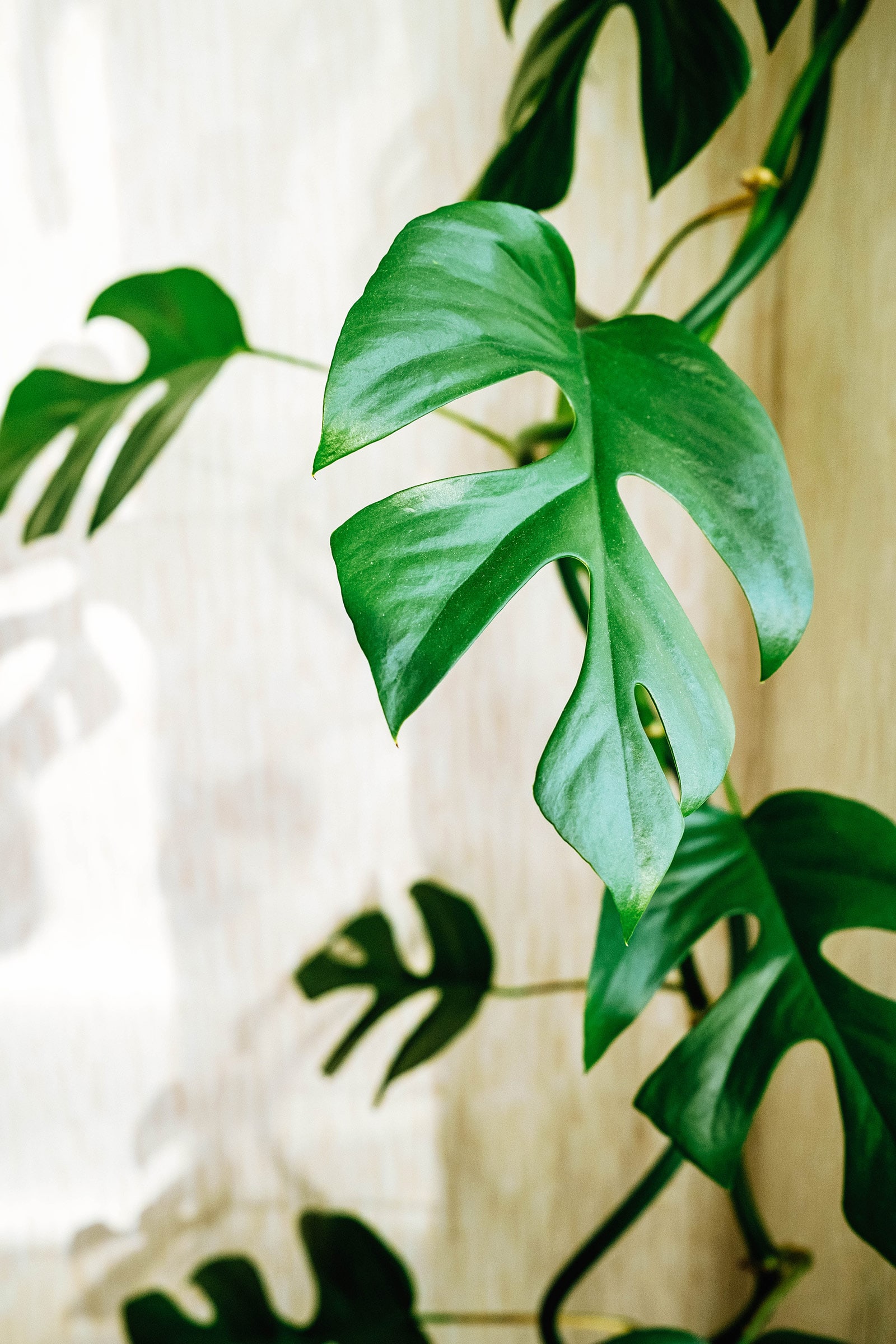
Rhaphidophora tetrasperma vs. Monstera deliciosa
It’s not surprising so many houseplant enthusiasts mix these plants up: They really do look very similar at first glance. They actually belong to the same subfamily, called the Monsteroideae—which is funny, because they are in fact from different sides of the world!
As mentioned above, Rhaphidophora is found in Southeast Asia, while Monstera deliciosa is from Central to South America.
Their leaf splits and growth pattern are the main similarities, so much so that Rhaphidophora tetrasperma used to be marketed as a dwarf version of Monstera. That being said, with a little experience you’ll be able to see the difference between Monstera deliciosa vs. Rhaphidophora tetrasperma easily.
Monstera is almost always way bigger, with thicker stems even on juvenile leaves. Mature Monstera leaves will usually have holes (in addition to the splits), while Rhaphidophora rarely does indoors.
Other differences include the fact that Monstera leaves are more heart-shaped and grow closer together. Rhaphidophora is the quicker grower out of the two, putting out new leaves almost constantly.
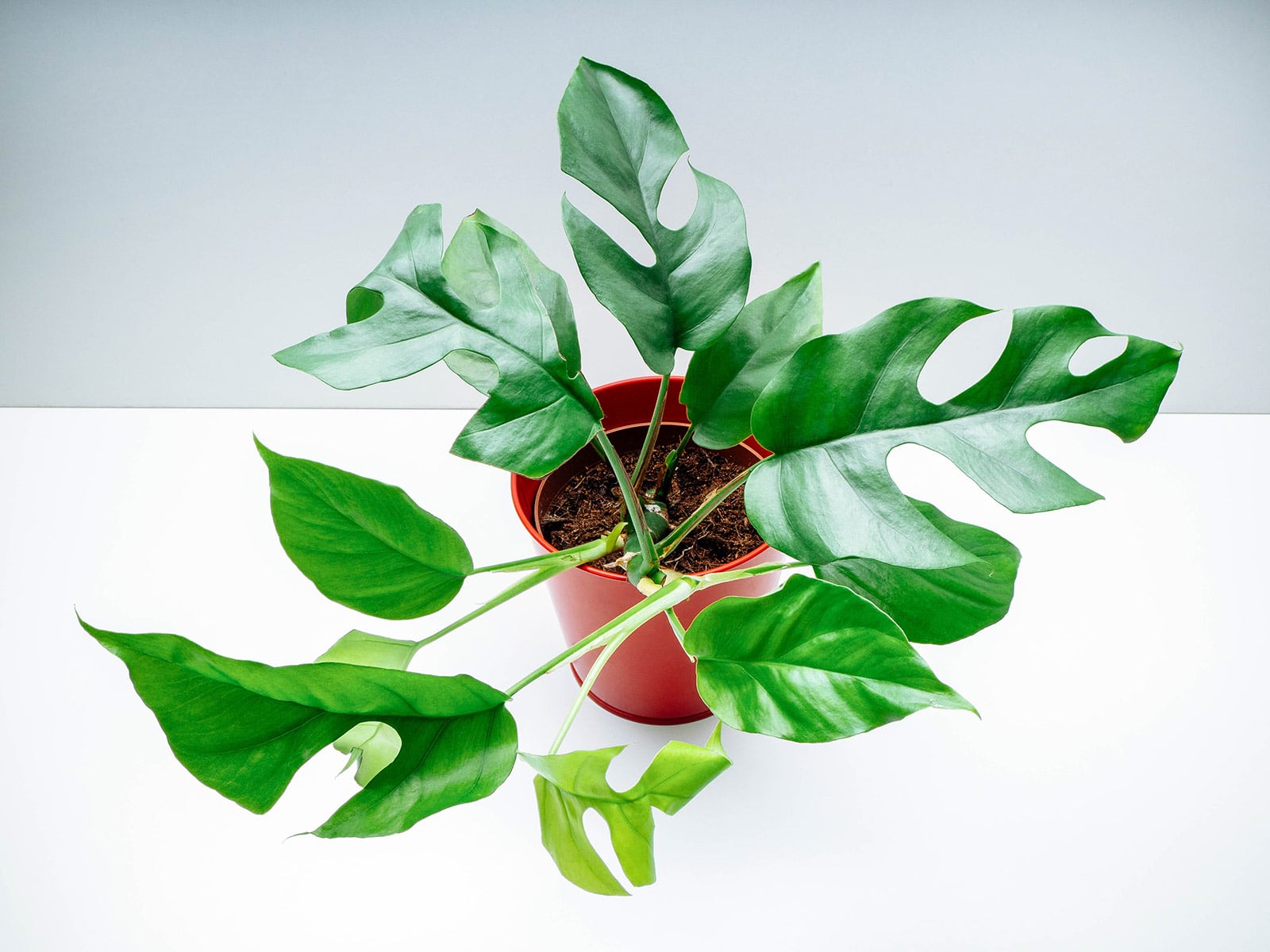
Rhaphidophora tetrasperma varieties
The fact that this plant is sometimes referred to as Rhaphidophora/Monstera/Philodendron ‘Ginny’ suggests a cultivar. After all, that’s what the quotes indicate: a selectively cultivated version of a plant that has been given its own commercial name.
Unfortunately, though, this is just another case of incorrect or misleading naming, probably for marketing purposes.
There actually isn’t much out there in terms of Rhaphidophora tetrasperma varieties, although I do have to say that the genus itself contains some other charming aroids. I particularly like the pinnate Rhaphidophora decursiva and the shingling Rhaphidophora hayi.
The only mini Monstera variety you will find is variegated plants. Don’t expect to encounter these at your local plant store, however, as they are rare and can fetch astronomical prices. Their leaves usually feature a mix of normal green and mottled yellowish coloration, although there are a few different types of variegation to be found.
Where to buy Rhaphidophora tetrasperma plants:
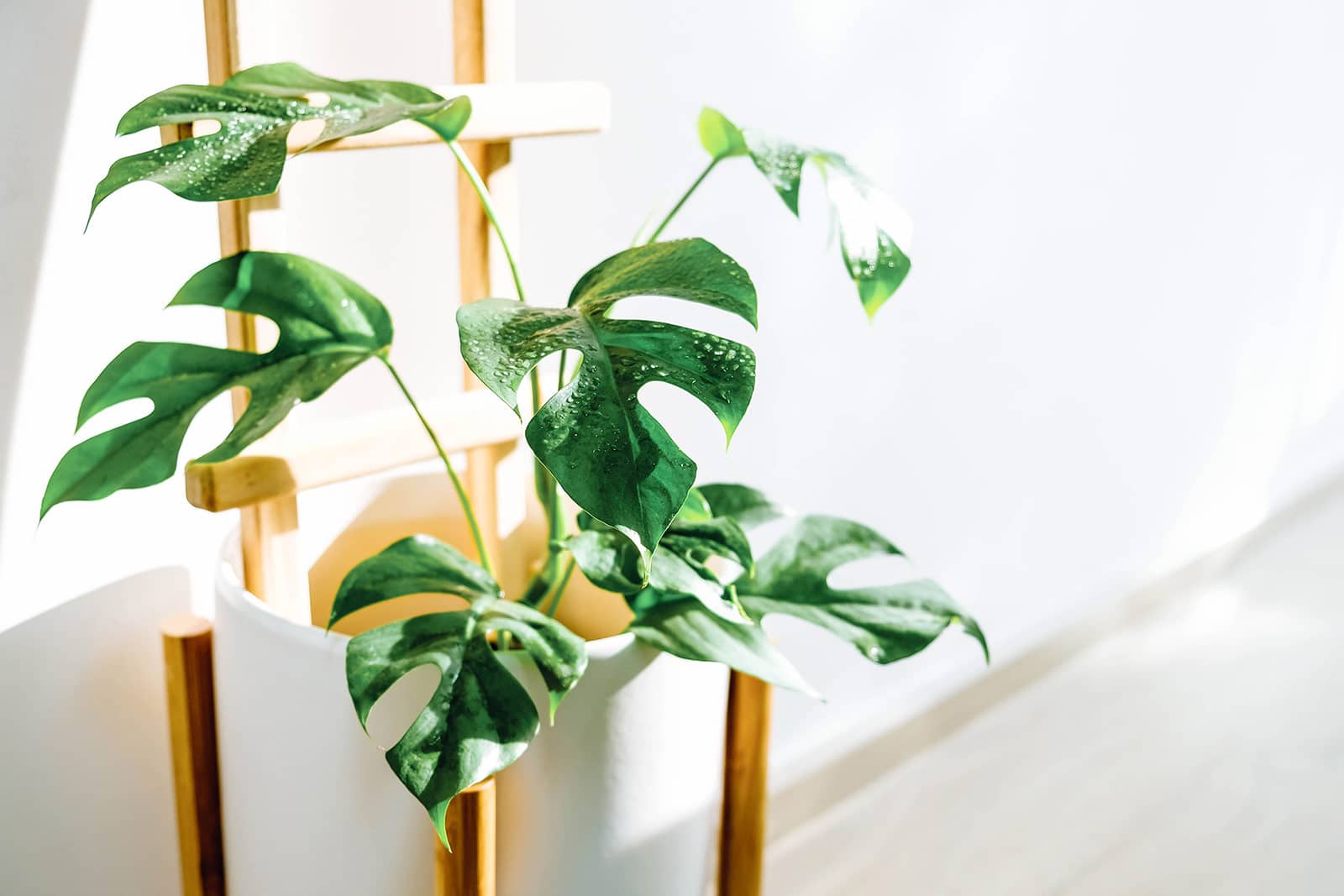
Caring for Rhaphidophora tetrasperma
Light and temperature
When it comes to its light and temperature requirements, this species is a typical rainforest aroid. It likes plenty of light, although too much direct sun can scorch its leaves. In its natural habitat, the strongest of the tropical Asian sun is blocked out by taller trees, after all!
You can expose your Rhaphidophora tetrasperma to high light levels and it will appreciate it, but it’s a good idea to acclimate the plant slowly.
In terms of temperature, you’ll have to keep in mind that rainforests in Malaysia and southern Thailand stay warm year-round. Daytime temperatures rarely drop below a whopping 77°F, so you can imagine that a plant originating from these areas doesn’t appreciate the cold.
Your mini Monstera can take even the hottest temperatures as long as it isn’t being scorched by direct sun. It’s much less resistant to low temps; mine has done fine down to 59°F, though it stopped growing at this point. I wouldn’t personally let things get any cooler to prevent leaf loss and other problems.
Water and humidity
If you’re trying to figure out how much water your mini Monstera needs, just mentally head to that Malaysian or Thai rainforest again. These areas are known to receive impressive amounts of rain, which means your houseplant will appreciate something similar in the home!
Although Rhaphidophora tetrasperma needs well-draining soil to thrive (see the next paragraph), it doesn’t appreciate its substrate going completely dry. Instead, keep the soil lightly moist, especially during the warm summer months when the plant should be growing actively and putting out new leaves all the time.
I can’t tell you how often to water, so just get used to doing the finger test! Damp soil means you can wait a little longer, but if it feels (almost) dry to the touch, it’s time to give your mini Monstera a drink. Waiting too long can cause the leaves to start drooping.
Did you know? Mini Monsteras are an excellent choice if you want to dabble in hydroponics. These plants are quite easy to grow in water, no soil needed!
I haven’t found this species to be overly fussy about humidity, but it’s probably still not a good idea to let things drop below 50 percent on a regular basis. You can test this using an inexpensive humidity meter (I like and use this one), a handy tool for indoor gardeners that usually also displays the temperature.
If it turns out your home is on the dry side, you may have to take some measures to make sure your Rhaphidophora and other tropical houseplants (like Alocasias and Philodendrons) don’t end up with brown leaf tips and other issues.
You can bring the humidity up by:
- Running a humidifier. The easiest option!
- Grouping houseplants together to create a tiny rainforest microclimate.
- Growing houseplants in a terrarium environment, humidity cabinet, or even just a clear bin with moist sphagnum moss.
Soil and planting
The perfect soil mixture for your houseplants depends a bit on how heavy-handed you tend to be when it comes to watering. I’m one of those relatively rare specimens who leans towards underwatering, so my mini Monstera is in a more moisture-retaining mixture. It consists of potting soil with perlite, some bark pieces, and coco coir.
Are you more prone to overwatering, like most indoor gardeners? In that case, a classic soilless aroid mixture may be a great choice for your Rhaphidophora tetrasperma (and similar tropicals). These dry out quite a bit quicker than mixtures containing soil.
There are many different ingredients you can use, but the basic gist is that you want something that combines elements that let excess water drain easily with elements that hold some water.
An example of a soilless mixture for aroid houseplants like this one may include:
- 2 parts fine orchid bark (for drainage)
- 1 part perlite (for drainage)
- 1 part sphagnum moss (for water retention)
Every houseplant enthusiast has their own preferences, so you can absolutely experiment a bit to see what works best for you.
In terms of planting, are you thinking of letting your Rhaphidophora tetrasperma hang or climb? The plant itself prefers to climb, but it does look quite decorative in a hanging planter as well.
Whatever you do, it’s always important to go for a pot with a drainage hole in the bottom. Standing water can cause root rot. A trellis or plant totem is perfect to trail this species upwards, though its vining nature makes it very versatile.
Recommend products for Rhaphidophora tetrasperma plant care:
- Good Earth Organics Premium Potting Soil
- Perfect Plants Organic Perlite
- Better-Gro Orchid Bark
- Burpee Organic Coconut Coir
- Better-Gro Orchid Moss
- Totem Monkey Extendable Coir Moss Poles
Fertilizing
Mini Monsteras aren’t heavy feeders, but since they tend to put out so much new foliage during the growing season, they do appreciate a little bit of help. Try a balanced liquid houseplant fertilizer diluted in water every month or so. A little goes quite a long way.
Don’t feed your houseplants if they’re not growing well. It won’t make them produce any more leaves, it just hurts their roots! This also applies during winter, when most tropicals tend to be inactive due to the low temperatures and low light levels.
Recommend fertilizers for Rhaphidophora tetrasperma:
- Houseplant Resource Center Monstera Plant Food
- Espoma Concentrated Organic Indoor Plant Food
- The Grow Co. Organic Indoor Plant Food
Pruning
Do you need to prune a mini Monstera? Not necessarily. I’ve never pruned mine aside from very occasionally removing dead leaves at the bottom of its main stem.
If yours has gone really wild and needs a haircut, be sure to have a look at the section on propagation below. Cuttings can be re-rooted, so it would be a waste to throw them away after a pruning session.
Dividing or repotting
A healthy Rhaphidophora tetrasperma will need regular repotting, at least the first few years. They can outgrow their planters pretty quickly. Dividing isn’t really an option, since this species doesn’t grow in a clumping manner. They can produce offshoots at their base, but it’s not something I see all that often.
It’s time to repot your mini Monstera once you see roots coming out of the drainage hole or notice the soil drying out too quickly.
Repotting is best done in spring or early summer. Gently remove it from its pot and give it a shake to remove excess soil from the roots. Go one pot size up, providing some nice fresh soil. That should be enough to hold your plant over at least until next spring!
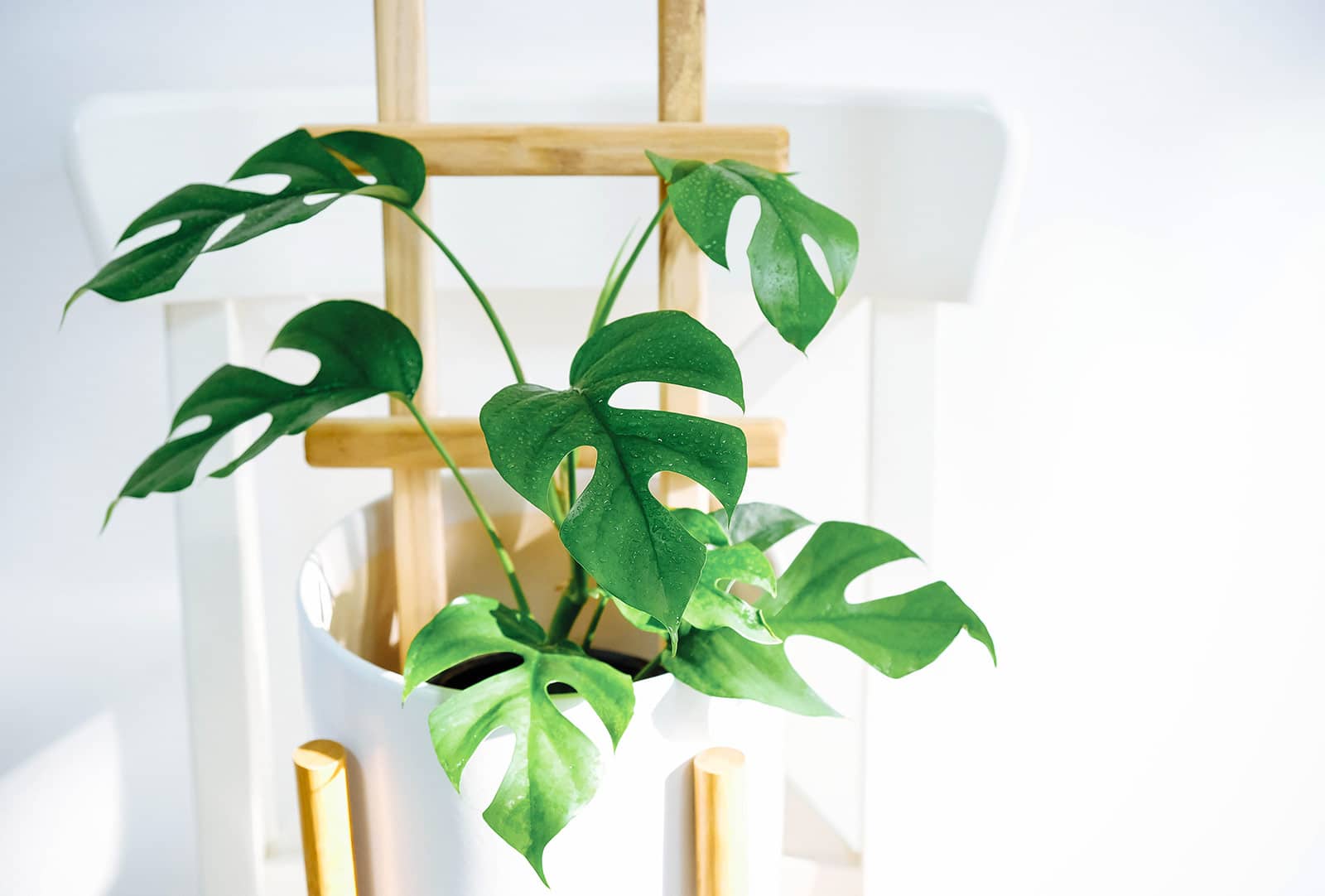
Propagating Rhaphidophora tetrasperma
You only need a small piece of Rhaphidophora tetrasperma to create a whole new specimen. Due to their long stems, these plants are ideal candidates for stem propagation, which is basically fancy language for beheading. The nice thing is that the headless vine will re-sprout from a different growth point, so you don’t have to worry about the mother plant suffering if you take cuttings.
Cuttings can be placed back in the mother plant’s container to give her a fuller look or potted separately.
Here’s how propagating mini Monstera works:
- Select a vine to take a cutting from. The cutting should be at least 2 inches long, and have a node (growth point) and a leaf or two for proper photosynthesis.
- Use clean pruning shears to cut just below a node.
- Propagating in water: Place the cutting in a glass of water in a bright location (out of direct sun). Once the roots are an inch or two long (which can take a few weeks to months), you can pot up your brand-new plant.
- Propagating in soil: Prepare some normal mini Monstera soil in a small (nursery) planter and stick the cutting in there. Place in a bright location (out of direct sun) and keep lightly moist. You’ll know you’re good once the first new leaves appear.
If you’re propagating in soil, a dash of rooting hormone like this one can really help get your cutting started, but it’s not a must.
And voilà! It’s this simple to multiply your plant in order to give away, sell, or just expand your own collection.
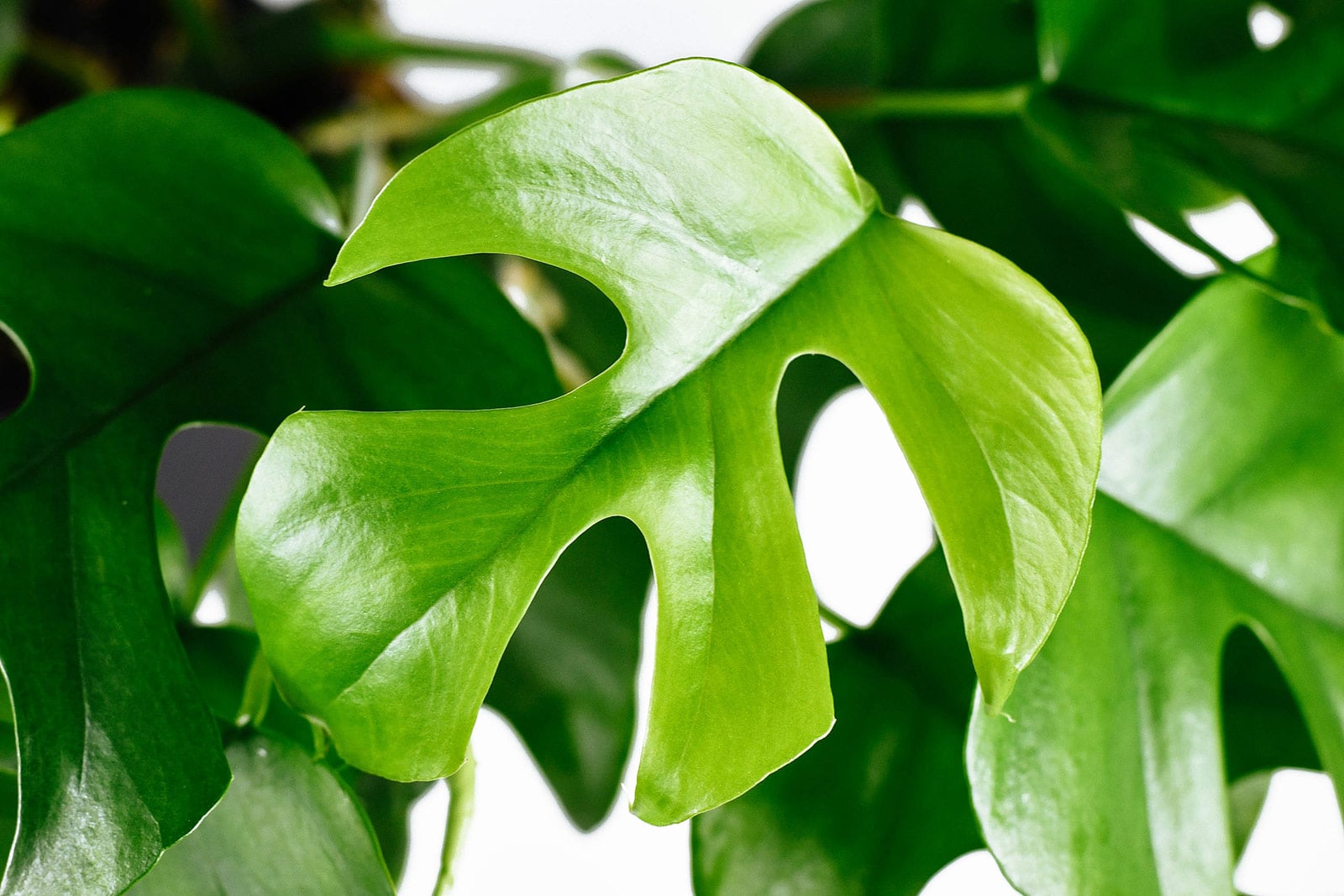
Common questions about Rhaphidophora tetrasperma care
Why is my Rhaphidophora tetrasperma not splitting?
How much light is your plant getting? Unless it’s a juvenile, the most common cause for leaves reverting to a non-split appearance is light starvation.
I accidentally deprived my Rhaphidophora of light one summer (I had to keep the shutters closed due to my home becoming too hot), and it promptly put out some splitless leaves. Whoops! No permanent damage, though; once I gave it more light, new leaves began to come out split again.
Is Rhaphidophora tetrasperma toxic to cats and dogs?
Chewing on mini Monstera leaves can cause irritation and swelling in your pet’s mouth and throat, as the sap contains oxalic acid. Permanent damage is very unlikely, but it may be a good idea to grow this species out of your furry friend’s reach, especially if you’re dealing with a repeat offender.
Sources:
Boyce, P. C. (1999). The genus Rhaphidophora Hassk.(Araceae-Monsteroideae-Monstereae) in Peninsular Malaysia and Singapore. Gard. Bull. Singapore, 51(1), 183-56.
Boyce, P. C., Zulhazman, H., & Sofiman, O. A. (2012). Studies on Monstereae (Araceae) of Peninsular Malaysia IV: The enigmatic Rhaphidophora corneri refound after 75 years. Gard. Bull. Singapore, 64, 281-288.


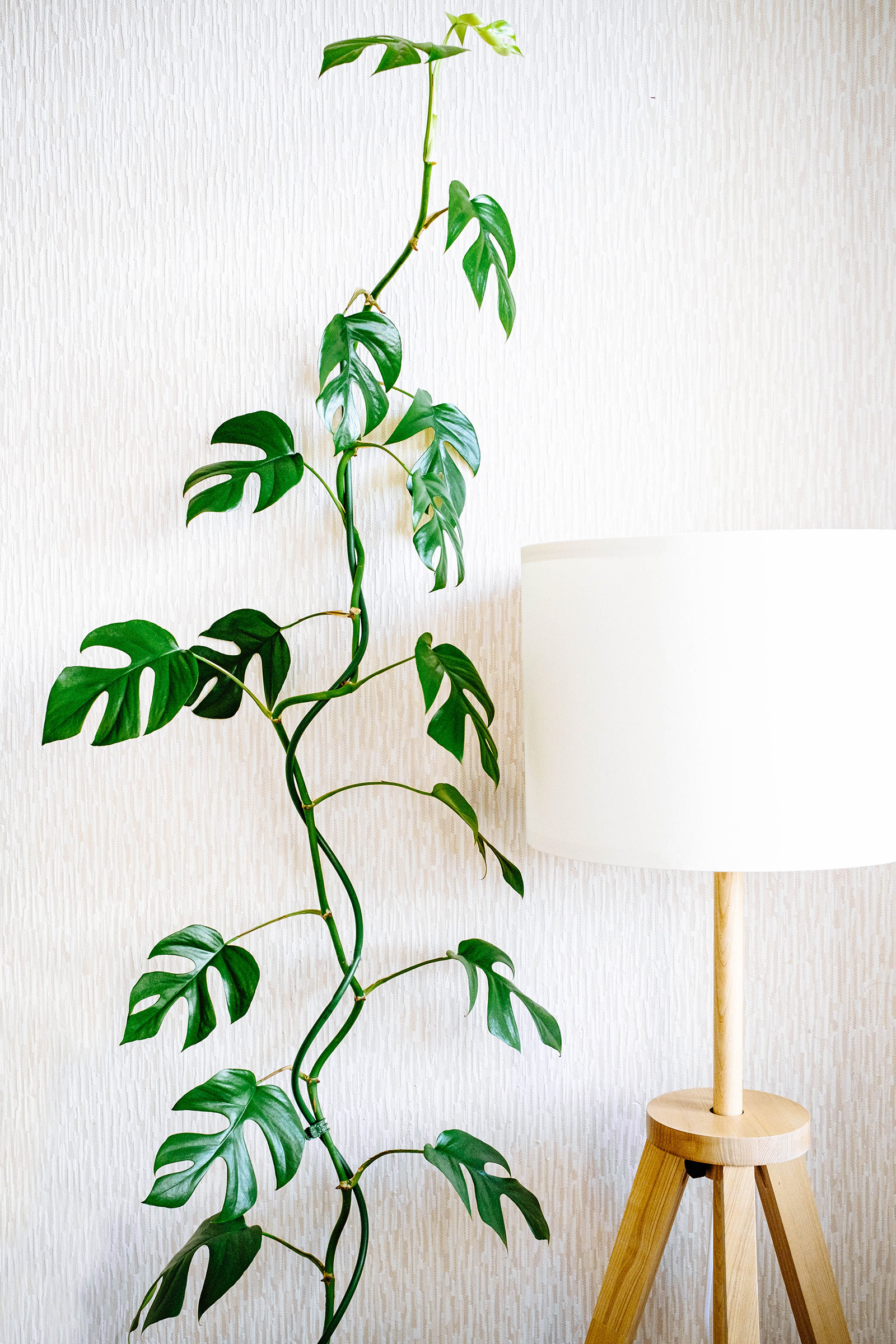













Thank you so much for such a lovely article with informative content. Hope to see more of a similar article.